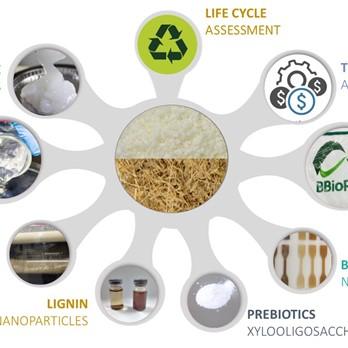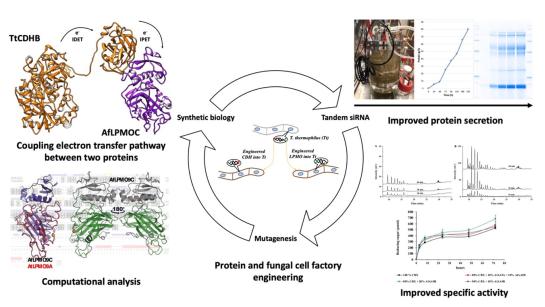
Nanotechnology for Food Industry: Nanomaterials from biomass.
Dr. Gabriela Berto
University of São Paulo
An integrated biorefining strategy was applied to fractionate sugarcane bagasse into its major constituents, enabling high-yield conversion of the fractionated materials into high-value coproducts to be apply in the food industry alongside cellulosic ethanol. Steam explosion produced a hydrolysate rich in low molecular weight xylooligosaccharides that had a high in vitro efficacy as a prebiotic towards different bifidobacterial, being a potential food additive. Lignin recovered after alkaline treatment was converted into uniform spherical lignin nanoparticles with antimicrobial and UV absorption properties suitable for food packing application aiming to enhance the shelf life of fresh products. The rich-cellulose fraction was enzymatically hydrolyzed to yield as pure glucose used to ethanol fermentation. The cellulosic solid residue was defibrillated by disc ultra-refining into homogeneous cellulose nanofibrils and by controlled enzymatic treatment the rheological properties are able to be tailored and the colloidal suspension can be applied as a rheological modifier in dairy products. The valorization of agriculture wastes in renewable biomass-based industries is highly attractive and economically critical.

Genetically engineered microorganisms in food technology.
Prof. Dr. Fernando Segato
University of São Paulo
Over the history of humankind even without the knowledge of their existence, microorganisms have been used in several food production processes. Generally, they were explored in fermentation processes to produce foods yogurt, beer, wine, soy sauce, vinegar, cheese, among others through the action of endo- and/or exogenous enzymes. Since its first description in 1830s, food producers have trying to discover new ways to make them more robust and efficient in different processes. Even though, humankind took thousands of years to discover and describe the microorganisms, less then centuries were needed to start to genetically modify these tine life forms. Since that, in the past decade several achievements in molecular biology, biochemistry and more recently in synthetic biology led the genetic engineered microorganisms (GEMs) to achieve the production of compounds of interest for many fields of application, including the food sector. This fast growth in the interest in GEMs utilization us due the capacity to use low cost raw materials and reduced space to produce compounds only obtained by the cultivation of specific plants that made use of many hectares of land followed by laborious processes of extraction. Therefore, due to its adaptability and rapid growth, several species of microorganisms have raised interest in industrial processes to produce brewed foods or ingredients.
